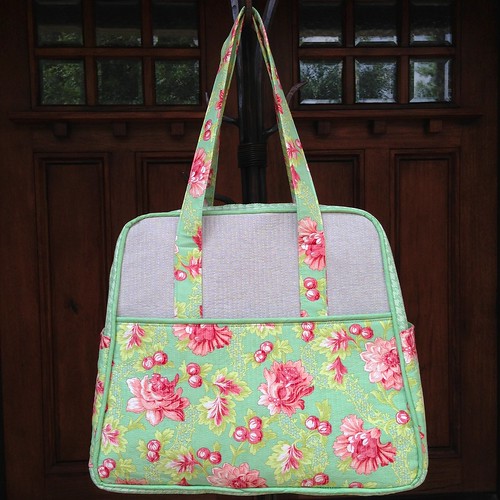Shabby Fabrics was also kind enough to offer my blog readers a discount on fabric good through December 12, 2014. Scroll to the bottom of the post for the coupon code.
I used a few pieces of Mimosa from my stash to add to the patchwork exterior and drafted my Dainty Tote tutorial. I have made a couple of versions of this little bag in the past few months, but I made a few modifications and I am ready to share it. This is a bit of a fiddly pattern in a couple of places. There are some curved seams with binding that make for interesting wrangling, but it is completely doable. I am giving instructions for a zip top panel, but if you are deathly afraid of zippers, you can substitute the zipper for a magnetic closure at the top.
This is a small, but fairly deep bag (hence the name Dainty Tote). The handles are short, with a 4" handle drop to carry in your hands or on your forearm. Strap length can be easily adjusted.
To download a free PDF of this tutorial, please see the listing in my Craftsy store.
Approximate Finished Dimensions
10" W x 4" D x 7" H; handle drop 4"
Materials
Exterior Main Panel:
Panel: (Cut 1)10.5" wide x 18.5" tall
For patchwork panel: (45) 2.5" mini charm squares - 5 across x 9 down
Batting: (Cut 1) 12.5" wide x 20.5" tall
Non-quilted option: substitute fusible fleece in place of batting (cut 1) 10.5" wide x 18.5" tall
Side Panels (Exterior and lining):
Fabric: (Cut 4) rectangles 6" wide x 7" tall (will be cut with attached pattern piece after assembling)
Batting: (Cut 2) 6" wide x 7" tall
Non-quilted option: substitute fusible fleece in place of batting (cut 2) 6" wide x 7" tall
Panel: (Cut 1) 10.5" wide x 18.5" tall
Interfacing: (Cut 1) 10.5" wide x 18.5" tall mediumweight interfacing. I used Pellon Shape Flex SF-101
Handles/Bias Binding:
One half yard of fabric - see cutting directions below
Handles Interfacing: (Cut 1) 6" x 15" - use heavyweight interfacing if you want handles to stand upright. I used Pellon 808 Craft-Fuse
Zip Top Panel:
Top Panel Fabric: (Cut 4) 1 5/8" wide x 10.5" long
Top Panel Interfacing: (Cut 2) 1 5/8" wide x 10" long. I used SF-101
Zipper End Tab: (Cut 1) 3" wide x 2" tall
One 9 inch zipper
Side Panel Pattern Piece DOWNLOAD HERE
Make Bias Binding
You will need approximately 76" of bias binding. Use your favorite method to make the binding. For this tote, I use matching handles and bias binding fabric, so I prefer to start with a larger cut of fabric to avoid joining binding. Following is the method I prefer to use for this bag. Take one half yard of fabric, square up, and remove selvages. Fold one corner down at a 45 degree angle and smooth the bottom end to a nice point.
Using your ruler as a guide, trim off a tiny sliver the outside double fold of fabric at the top right. Then cut two 2.25" wide strips along the length (or 2.5" if you prefer that width). Cutting this way, you do not need to join your binding strips to bind the bag. There will be four strips of fabric - two longer and two a bit shorter.
Make Handles
From your leftover bias binding fabric, cut handles. Cut one rectangle 6" x 16" (top left pic). Fuse your 6" x 15" interfacing so that it is evenly centered on the fabric. There will be 1/2" on each end of the fabric that is not interfaced (top middle pic). This will make it easier to tuck under the raw edges at the bottom of the handles. Cut the rectangle in half lengthwise so you have two 3" x 16" handles. Fold down the 1/2" edge that is not fused with interfacing on each end (top right pic). I like to use a little water soluble glue to hold the folded edge in place. Fold each handle in half lengthwise and press a crease down the center (bottom left pic). Fold each raw outside edge in towards the center crease and press (bottom middle pic). Topstitch around the entire perimeter of the straps approximately 1/8" from the outside edge (bottom right pic).
Exterior Panel
If you are quilting your exterior panel, baste batting to the backside, quilt as desired, and trim to 10.5" wide x 18.5" tall. If you are leaving your panel with a plain exterior, use fusible fleece on the backside of the exterior.
Make Side Panels
If you are quilting your side panels, make a quilt sandwich with the side panel ractangles. Lining facing down, batting, exterior facing up. Quilt as desired, then use the attached pattern piece to trim to size.
If you do not want the side panel lining quilted, baste the lining fabric to the exterior and batting after quilting. If you are not quilting the exterior or lining of the side panels (or the whole bag), fuse fusible fleece to the exterior, and then baste the lining fabric on the back and use attached pattern piece to cut to size.
Note: If you want more space between the top zip panel and the side panels than I have on my finished bag (they touch as I have them constructed), trim 1/2" from the top of the side panel pattern piece prior to using.
Attach Binding to Top of Side Panels
To make the most of the bias binding and avoid having to join it, grab your two longest pieces of bias binding. Each of the long strips is long enough to bind a side panel and an 18.5" long edge. Trim the angled end straight, attach the binding to the exterior of the side panel with 1/4" seam, trim the excess length, and set it aside to use on the long edge. Do the same with the second side panel and the second long bias binding strip.
Flip the binding to the lining side and stitch in place, either by machine or by hand.
Attach Handles
On each short edge of the bag, position the bottom edge of the handle 2" below top edge of the panel. Position the outside edge of the handle 2.25" from the outside edge of the exterior panel. I like to use Wonder Clips to hold the top edge straight a glue baste the bottom inch or so in place with water soluble glue (heat seat in place on the bag after applying a small amount to the back of the handle). This keeps the handle from wobbling around while I am trying to sew.
Attach the handle to the bag by sewing a rectangle with an X through the middle. I mark my straps with water soluble marker or Frixion pen. Draw a horizontal line 1.25" from the bottom edge of the strap and then an "X" from corner to corner. Stitch in place around the perimeter of the rectangle, going over your topstitching lines, then sew an X through the middle. Make sure your rectangle does not come up higher than 3/8" to the top edge to allow room to attach binding later.
Baste Lining Panel to Exterior Panel
Using a long basting stitch, baste lining panel to exterior panel. Make sure to fold handles out of the way when basting the top edge.
And now your bag will look something like this:
Attach Side Panels
This is where the potentially tricky part begins. Just take your time and it will work out. Mark the center on each side of your lining panel (it will be 9.25" from the edge). Fold your side panel to find the center of the panel and mark it. Lay the side panel on the lining panel, matching center marks.
Wonder Clips are super handy for holding the side panel in place to baste it. Starting from the bottom center, matching raw edges, clip or pin the side panel to the lining side of the bag. Make sure that the top of your side panel ends at the same distance from the top of the bag on both sides. It should be approximately 1/2" to 5/8" below the top edge, depending on how snug your binding is on the side panel. (And yes, I am quite liberal with my use of clips.)
Baste your side panels into place. The first time I made this bag, I machine basted the side panel into place. It was difficult to keep the pieces from shifting. Now I take three minutes to hand sew a basting stitch. It is just as fast, and it makes attaching the binding easier and nicer looking.
Attach Binding to Side Panels
Grab the two pieces of leftover binding you used to bind your side panels. Using a 1/4" seam allowance, attach binding to the side panels, starting the top edge, working around the curves and the bottom, and up to the top edge on the other side. Take time to stop and position your bag so it is not rumpled underneath when you are going around the curves. Also use the bit of stretch in the bias binding to ease around the curves and make sure the raw edges of the binding meet the raw edge of the bag. Hopefully, the collage will help to illustrate how to sew on the curves.
After attaching the binding to the side panels, press around the binding to help the bag lay nicely.
Flip binding to the bag exterior and stitch in place. I have only tried hand stitching the binding, but I would love feedback on whether machine stitching the binding works nicely or is too fiddly.
Make Zip Top Panel/Attach Zipper
Fuse interfacing to two of your 1 5/8" x 10.5" long fabric zip top panels. Position the interfacing so that 1/2" of one end of the fabric is not interfaced (much like the handles, but only on one side). The interfaced pieces will be the exterior of the panel and the non-interfaced pieces will be the lining of the panel. You can also interface all the pieces if it is easier to keep track of when you are assembling.
On each of the four panels, fold back one end 1/2" and press into place. This will cover the raw edges by the zipper pull. The side of the panel with the closed end of the zipper will be covered by an end tab.
Trim 1/4" off the closed end of the zipper tape. You will line that edge up with the raw edge end of your top panel fabric.
Make a zipper sandwich as illustrated in the pictures below. Lay a lining panel piece face up, lay zipper tape with zipper teeth up on the right hand side of the lining panel fabric. I have included instructions on how I like to attach the zipper, but use whatever method you are most comfortable with, if you have a preference. Baste the zipper tape to the lining fabric (top pic).
Pull the top of the zipper tape (the excess bit that sticks up over the top of the panel) by the zipper pull to the right until the metal end is just over 1/4" from the outside edge of the long edge of the panel, and tack it into place with a few stitches (top left pic in collage). I like to use wonder tape or water soluble glue to hold the rest of the length of the tape in place without pins or shifting. Once the top of the zipper tacked down a bit, you can pull the zipper tape above it even more to the outside of the fabric so it doesn't peek out when you sew the zipper sandwich together (top right pic).
Take your interfaced exterior panel piece with the folded edge and lay it face down on the basted zipper. Line up the folded edges and the long raw edges (top right pic). Baste into place. Using a zipper foot, sew zipper sandwich with 1/4" seam allowance (bottom left pic). Optional: once your zipper sandwich is sewn, trim the zipper tape between the folded end pieces at an angle if any of the tape is still peeking out (bottom right pic).
Sew the second side of your zipper.
Lay exterior interfaced piece face down, folded end at the top. Lay the zipper tape face down, and the lining piece on top, face down, with folded edge at the top. Make sure that all of your folded end pieces are facing the zipper pull, and that the raw edges are at the closed end of the zipper. Baste and sew using the same method as the first side.
Topstich Top Zip Panel/Attach Zipper End Tab
Press back both lining and exterior panel pieces from the zipper. Match the folded edges of the panel by the zipper pull carefully. Starting at the short edge of the panel with folded edges, topstitch the zip panel close to the edge (top left pic), and all the way down the long edge by the zipper until you reach the raw edge of the panel by the closed end of the zipper (top right). Topstitch both sides.
Take your 2" x 3" strip of fabric and press the 2" length in half and then press the raw edges on each side in towards your center crease, just as you did with your handles (bottom left pic). Slide the zipper end tab over the raw edge of the top zip panel, and topstitch into place (bottom right).
Baste Top Zip Panel to Bag
Attach Binding to Top Edge
Trim binding edge straight and fold back one end 1/2". Line the folded crease to the edge of the bag side on the exterior side (top left pic). Attach binding with 1/4" seam allowance - begin stitching at the folded crease/outside edge of the bag (top right pic). When you reach the end of the bag, backstitch in place and trim your binding with an extra 1/2" length at the end. Don't forget the extra length or your binding will have a raw edge on one end. (Let me be the cautionary tale: this happened to me when I was on autopilot and I had to seam rip and make a new piece binding.) Also, make sure to flip the handles down while stitching on the binding.
Fold the creased edge of the binding from the side in towards the bag (bottom left). This will give a finished edge on the outside of the bag.
Fold down the top edge of the binding towards the exterior of the bag, gently tucking the folded raw edge of the binding underneath. Stitch into place by machine or hand.
And you are done!
Shabby Fabrics Coupon Code: ThreeOwls10
Good for 10% off your entire purchase until 12/12/14. One use per customer.
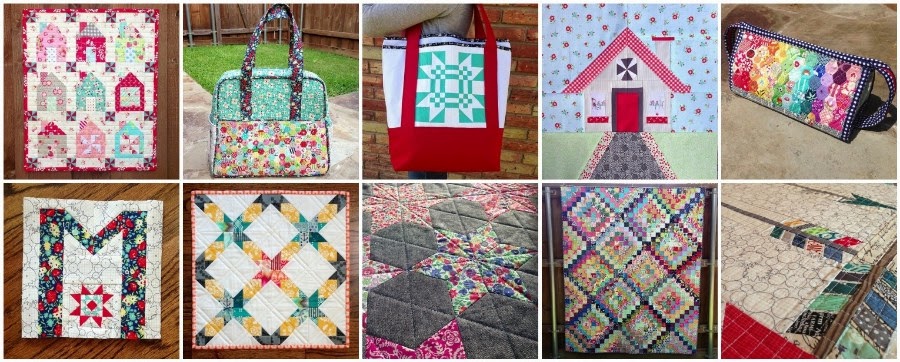

.jpg)



























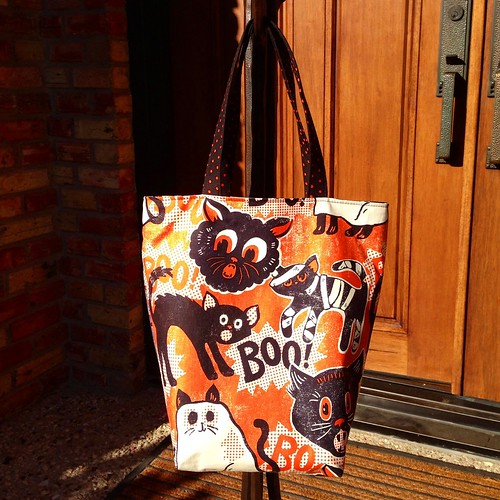
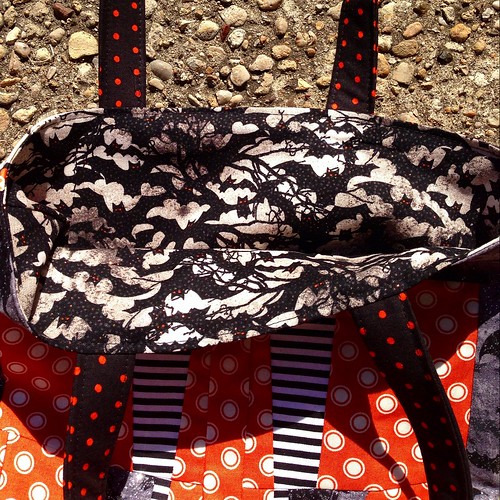
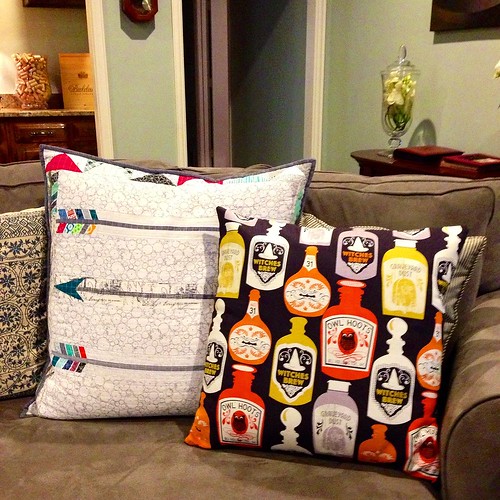
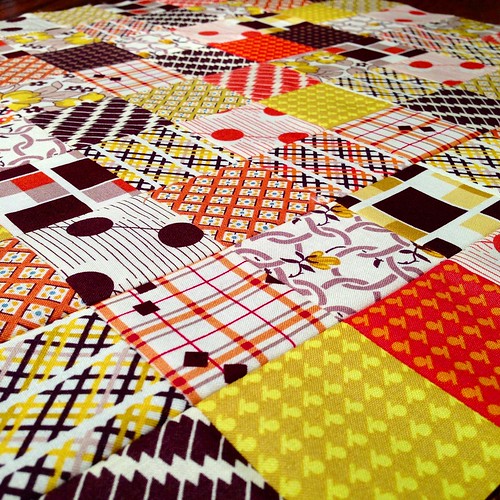
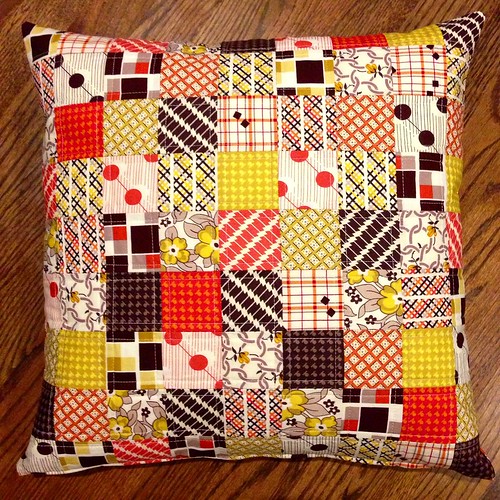
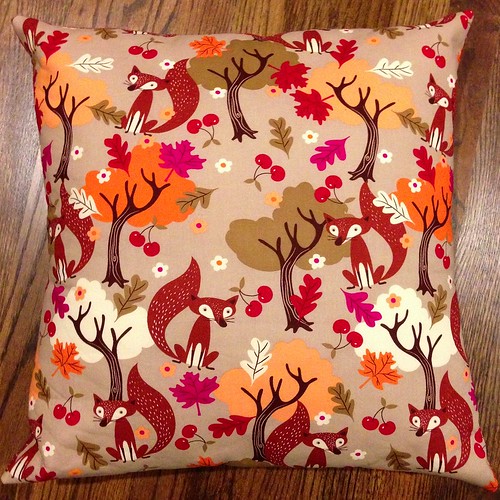

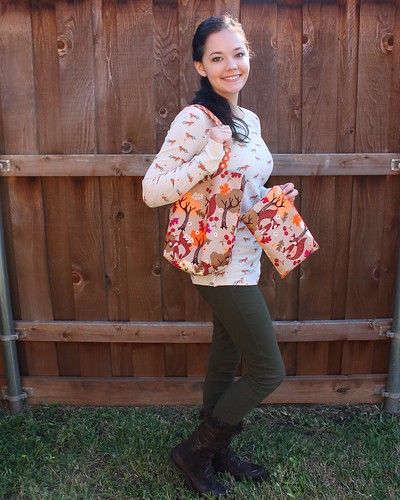

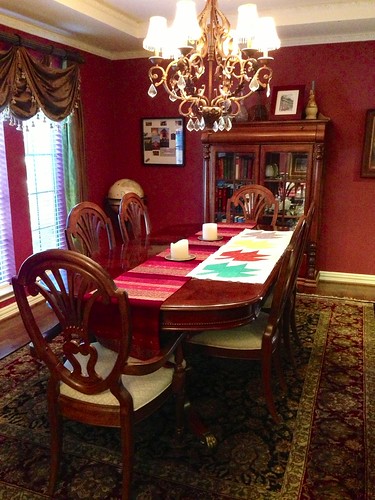









.jpg)






